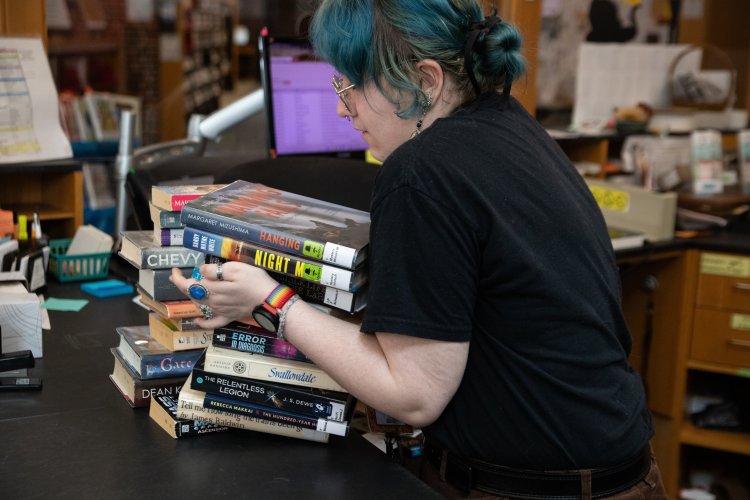
LEWISTON — This story started out with simple question: What good are libraries these days? Who are they for? Doesn’t Google pretty much take care of it all?
With that, the Sun Journal spent eight hours in the Lewiston Public Library on a June day that turned out to be full of surprises. The simple answer to the simple question?
Yes, it’s a place for book lovers. But, like books, libraries shall not be judged by their covers. A library is a place for babies and new parents. It’s a place for the curious and the social. A place for those seeking warm (or cool), safe, organized structure. A place of hidden rooms, tech assistance, crafting programs and problem solvers. A universe of prose, poetry, storytelling, information, education.
While libraries may be historic, they’re far from relics. It seems that libraries change with the times and its people, and the internet age is no exception. More on that in a minute.
The Lewiston Public Library, which as of is home to 144,878 physical items, is chock-full of character, starting with the building itself. The original Carnegie library on Park Street opened in 1903 and was expanded in 1996 with the purchase of the Pilsbury block — a series of storefronts at 200 Lisbon St. — right behind the original library.
The Pilsbury block was renovated and the two buildings were connected by a window-lined walkway on the second floor, resulting in an “Alice in Wonderland building,” according Sara Turner, deputy director and children’s librarian. She referenced the quirky stairways that don’t reach every floor, winding hallways and secret doors that often confuse new staff members.
Beth Almquist, technical services librarian, agreed. “Whenever we have new employees I always tell them: Look, after six months being here, you’re still going to get lost down here. Just ask – it’s OK.”
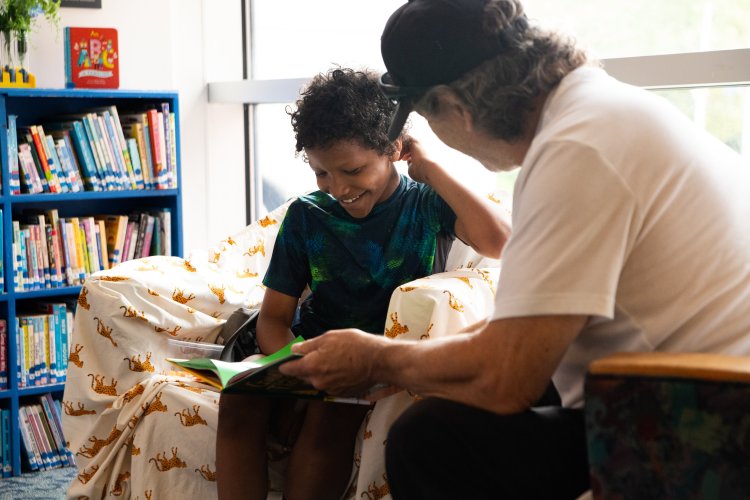
9:15 a.m.
The day began with the team’s morning huddle. Speaking over the hum of the dehumidifiers, the team reviewed the programming for that day and discussed the support they would need.
Turner updated the staff on hers and the director of the library’s absence in the following days for the American Library Association’s conference in Philadelphia, where Turner would be accepting the 2025 Lemony Snicket Award for Noble Librarians Faced with Adversity.
Following the morning huddle, staff returned to their stations to welcome patrons when the library opened at 9:30 a.m.
9:37 a.m.
Turner gives a tour through the children’s department, something the library staff looks forward to doing each Friday with the summer camp kids enrolled in the city’s recreation department’s program. “Field trips are really fun,” she said. “It’s our favorite during the summer.”
During these field trips, Turner will explain how the department is organized from baby books all the way to middle grade. “As you grow up, you move through the department,” she said. The space features a very popular castle for kids 7 years and younger and a “bat cave” for older kids.
During these visits, Turner has the opportunity to explain to the kids how libraries work. “I’ll ask them: Who do you think owns the books in the library? I get the best answers,” she said. Some believe Turner herself owns them, others suggest that the books belong to the mayor or the president.
“Then I end up talking about (how) this is a community of books. It belongs to all of us, which is why it’s important that we talk about how to take care of books at home and then they can come back so that others can enjoy it as well.”
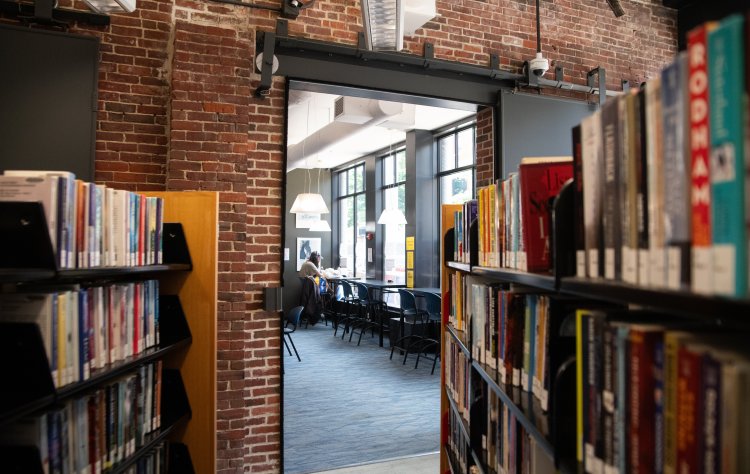
The department is nearing the end of its capital campaign for a renovation project that will modernize the room.
The children’s room prioritizes children’s perspectives and encourages them to pick their own books, whether it’s a picture book about dinosaurs or a graphic novel.
“We have one of the largest graphic novel collections in the state,” Turner said. “We’re really proud of that.”
The department is always changing to serve the needs of the community. With a 2020 federal grant from the National Endowment for the Humanities, the library was able to begin a collection of Playaways — preloaded audiobook devices — both in the public library and at all five of the elementary schools.
There’s also a display about grief and loss. “I had actually put this display up before Oct. 25,” she said, referring to the mass shooting in Lewiston in 2023. “Ever since then, this is a permanent display.” Turner said it allows patrons seeking these books to maintain their privacy around sensitive topics by not having to ask staff for help locating them.
Perhaps the most valuable resource in the children’s department is the social spaces it provides. “We’ve created social environments not only for kids, but it’s also for parents,” Turner said.
The library hosts “preschool playdates” and “baby storytime” sessions, the Community Read program, ArtVan visits, and various presenters.
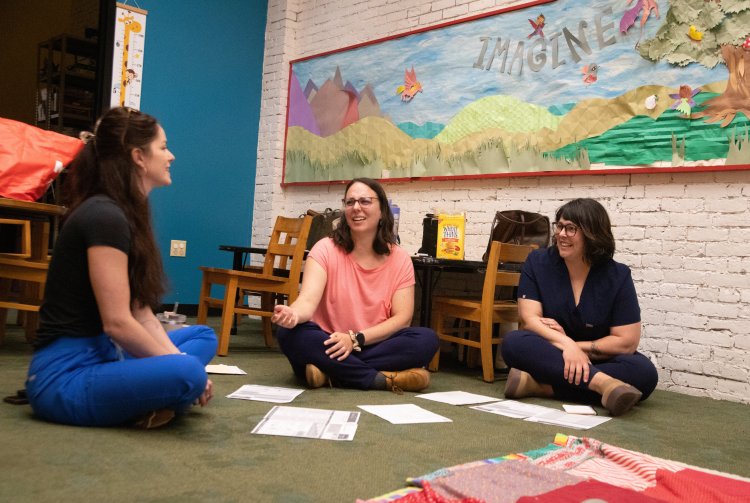
Through these programs, Turner said, support groups and friendships among kids and parents have been formed. “Coming in and getting to meet other people can be so important. Everybody needs a support system,” she said.
Turner explained how their programming for babies and new mothers is especially important.
“We’ve been really trying to focus on babies because there’s really not a whole lot of other places for parents or guardians to take babies unless it’s a paid space,” she said.
11 a.m.
The management staff of the library convened in the third-floor conference room to give updates and discuss library needs.
This Wednesday morning consisted of city updates from Joseph Houston, the library director, who had attended the weekly city department head meeting earlier that morning. Also on the agenda were discussions about the broken patron elevator and boosting engagement in the summer reading program.
Part of Houston’s role as director is being an advocate for the library to the various organizations and stakeholders involved in its operations and functioning. “It’s a lot of coordinating different pieces,” he said.
11:42 a.m.
While the library managers were at work, patrons had been enjoying the first couple of hours of a day at the library. Sofia Andree sat chatting with a friend at the table that houses an ongoing, collaborative jigsaw puzzle on the second floor. Andree said she comes to the library weekly to use the study rooms and to connect with others.
“It’s a nice, quiet space,” she said. “It has all the resources you need.”
12:03 p.m.
For Izyak Sanzone, if the library is open, he’s probably there.
“I never used to come here before I became homeless,” he said. “For less than a year, I’ve been coming here, and already I feel like it’s home. I’ve been coming here every single day. Everybody says hi to me. That’s my favorite part.”
During the many hours he’s clocked there, he’s observed the different people that come to the library. “There’s a lot of homeless who hang out here, but there’s a lot of kids that come here too, and parents and families,” he said.

As someone who is introverted and neurodivergent, Sanzone said, social expectations are often difficult for him to navigate. The library has provided him a space that feels safe, where he feels comfortable talking with others. “I have been very vocal here, because a lot of people like my vibes that I bring, and they’ll come up to me, and I’ll come up to them, and they tend to trust me with stuff. … I like helping other people,” he added.
He noted that the staff is largely responsible for creating such a welcoming environment, specifically for unhoused folks. “We have our own problems,” he said, “but they include us. They include the other ones who absolutely have nothing. They let them come in.”
1:41 p.m.
Sahra Hussein, like many others, was using the space to cool off during the heat wave that had gripped the area that day. Hussein brought her kids, Salma, 16 months, and Samira Ahmed, 7, to beat their boredom and the heat.
“The power is out at my house,” she said.
The library is a popular place for people to shelter against all kinds of weather. Houston, who is coming up on his third summer at the library, has noticed that as the seasons change, so do the patrons.
“In the winter, we have a lot more people that use us just as a place to stay warm and a place to be safe for a while if they don’t have other resources,” he said. During the summer months, he said the library sees less foot traffic overall, but those who come stay longer.
“Summertime is when we tend to have people that are here for longer periods where they want to stay and hang out.”

2 p.m.
After lunch, Benjamin Snethen, the adult and teen services librarian, gave me a tour of the second floor, which houses the adult nonfiction, teen and foreign language sections, along with study rooms, computers and the reference desk.
The reference desk is in the original library building, whose stacks are Snethen’s favorite part of the library. Glass floors and metal shelves house the library’s French, Spanish and Somali fiction and it feels like stepping into a time capsule.
Though the floors are completely sturdy, “people are occasionally a little bit scared to walk on them,” he said.
Off the reading room, where patrons use their personal devices, is a “fun little room that occasionally gets used by patrons who know that it’s here,” Snethen said. Inside is the microfilm setup, where patrons can request to look at digitized versions of local newspapers from the late 1800s to the present day.
Microfilm may not be a frequent patron request, but technology assistance certainly is. Technology literacy and tech barriers are one of Lewiston’s community needs that the library seeks to address. “The vast majority of what we do as the Reference Department that I oversee is technology help,” Snethen said. Librarians field many questions about sharing documents, printing and accessing online applications.
Kyle Breton, the teen library technician, emphasized that anyone, regardless of class or background, can be tech illiterate and he receives tech questions almost daily.
Lewiston’s diversity is reflected in the library. The city’s population of native Mainers, new Mainers, non-English speakers and unhoused people creates a variety of needs for the library.
“We’re a very diverse community that’s in a very cool way a great mix of generational families … and brand new families from all over the world,” Snethen said. “We serve a unique population and the folks who come through have a much wider variety of needs, especially technologically.”
2:25 p.m.
The library is also a social space. In the Idea Lab, Snethen hosts most of the library’s adult programming, which usually involves live events presented by experts from the community on various topics. Though adult programming doesn’t often draw a large crowd, there are some events that have struck a chord with the community. In May, a presentation by Greg Marley on foraging for edible mushrooms had several dozen people in attendance.
“That was definitely a unique one that I didn’t necessarily expect to be that popular but was,” he said.
Snethen said he’s looking forward to the adult crafting events that will occur monthly starting July 7.
Deeper on the second floor is the archives room, which is inaccessible to the public. Among the contents of the archives are ledgers from Lewiston’s once-thriving mills, including the Bates, Libby and Androscoggin mills, and old maps of the area. Only about half of the items are cataloged, but the project is ongoing for the library.
3 p.m.
Another little-known corner of the library lies in the basement, where much of the behind-the-scenes work with books occurs.
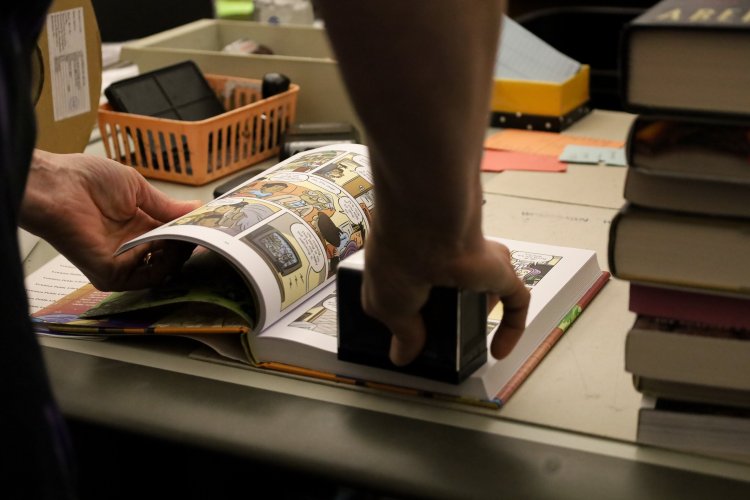
Almquist, the technical services librarian, is busy with her staff cataloging and repairing books, as well as preparing them for exchange via the Interlibrary Loan service, which allows libraries in the same system to exchange materials with each other so patrons have a larger selection of items available.
Lewiston Public Library, as one of the largest libraries in the state, plays a big role in providing items to other smaller libraries in the state.
It was a heavy cataloging week for the staff. For librarians, “they either really like cataloging or really, really don’t,” Almquist said. Lucky for Lewiston, Almquist loves it.
The process, which is a combination of data entry and coding, involves meticulous management of the library’s database, ensuring that all the information from publication date to genre to the author’s name are all correctly entered into the system.
The library, Almquist said, “is still the best source of information that our community can have. … We make sure that we are putting information into your hands that is going to be useful.”
Adding new materials is one of the library’s top priorities. Last year, the library added 5,744 items. In 2025, the library added 2,628 items and counting.
4:21 p.m.
What is a modern library?
“We’re not a social services institution,” Houston said, “but we do social services work. We’re not an education institution, but we do education work. We’re not a technology institution, but we do technology work. We’re not an entertainment institution, but we do entertainment work. And so all of the challenges and opportunities and wonderful things associated with all of those industries are sort of funneled up into librarianship.”
Asked what the library can do that Google can’t, Houston said many people don’t go to the library for information alone.
“Google can’t give you a meeting room to meet with your business or organization. … Google can’t do a program for you where a speaker is going to come in and give a presentation,” he said.
He also pointed to the individualized experience and information literacy that the staff helps provide.
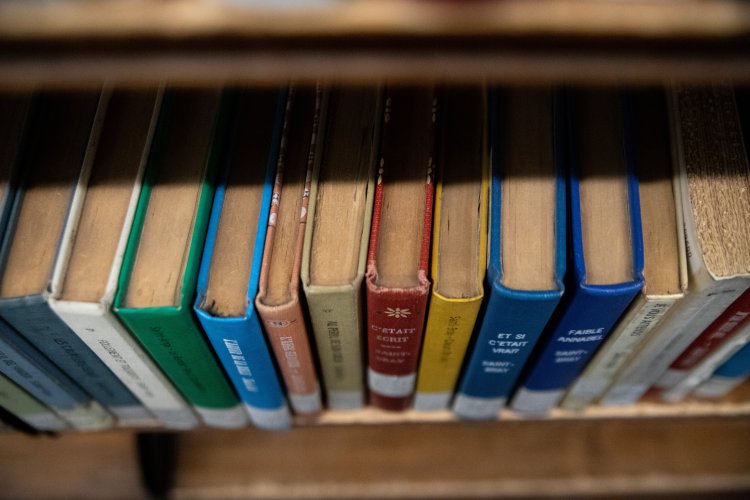
“What many people don’t realize is that … librarians are master’s-degreed, trained experts in the field of information science,” he said. “A librarian can help you understand the information that you’re getting from whatever source you’re using.”
In the end, librarians offer a human connection that internet help can’t provide.
“You get a lot of opportunities to touch people’s lives and to connect with them in a way that I haven’t experienced in other fields,” Houston said. The library being a free resource is key to the services it provides and the connections it makes possible.
“There’s something about removing those financial barriers and the social manipulation that’s involved in some other industries that allows a stronger human connection between the librarians and the patrons.”
The library and its staff seek to respect and protect their patrons’ privacy with the information and help they’re seeking, Houston said. “It takes some bravery for someone to come to you with a vulnerable need and ask for help,” he said.
Whether it’s doing research for someone who recently received a cancer diagnosis or simply showing someone how to send an email, “you feel honored to be able to serve that purpose in that moment and to know that you’re making a difference for somebody,” Houston said.
5 p.m.
As the evening approaches, the management staff leaves and a shift change occurs. Part-time employees fill in at the reference and circulation desks as the library enters its last two hours of the day.
Breton, the teen library technician, sees a number of teens coming into the library to hang out after school during the year and in the afternoon during the summer. For them, Breton said he tries to plan programming that has more entertainment value.
He said his teen video games program, which happens every Monday, Tuesday and Wednesday afternoon, will draw the same kids consistently for a period of time.
“I had a teen last week for like a month straight; he came in to just play Spiderman and then he’d leave. Now that he’s finished Spiderman I don’t really see him,” he said.
The library was calm overall. Patrons were never yelling or sleeping or causing trouble for the staff — though it’s no secret that this is not always the case, especially in the winter.
“Once it started getting hotter, a lot of the homeless people started hanging out outside,” Sanzone said. “When a lot of them are in here, there’s a lot of drama so it can get very interesting. I have seen cops show their presence here many, many times before.”
Over the years, like many libraries across the nation, Lewiston Public Library has faced the challenges that come with welcoming anyone and everyone – including patrons with mental health issues, substance use disorder and homelessness.
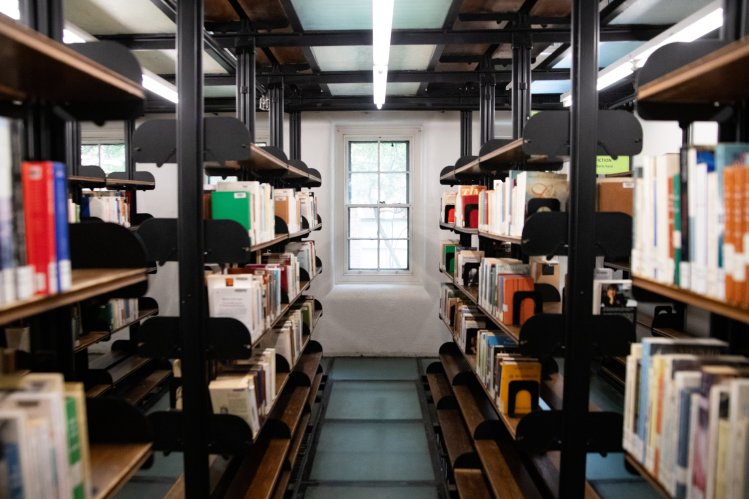
The library continues to implement policies and procedures to address these challenges. In November 2023, the library hired contracted security to support the building monitor position added in 2020. In addition to requiring a key for the bathroom, staff also began doing wellness checks in the bathrooms if patrons are in there for longer than 20 minutes.
The library’s welcoming philosophy more open to the gritty problems and challenges of the community, while it also speaks to the unique role it plays.
Asked to describe the library in three words, patrons and workers consistently say “inclusive,” “welcoming,” “historic” and “connection.”
Houston used the word “dreams.”
It seems that a library is an ever-expanding list of things: a house of books, a social hub, a technology help center, a creative space and a sanctuary.
“That’s sort of my desire, is to make sure that not only my staff, but also the community is thinking about … the big, wild things that we could do at the library,” Houston said. “We can take this and make it into a service that makes sense for people.”
“Libraries are meant to be reflections of their communities and they are meant to be adaptable to the needs of the community.”
We invite you to add your comments. We encourage a thoughtful exchange of ideas and information on this website. By joining the conversation, you are agreeing to our commenting policy and terms of use. More information is found on our FAQs. You can modify your screen name here.
Comments are managed by our staff during regular business hours Monday through Friday as well as limited hours on Saturday and Sunday. Comments held for moderation outside of those hours may take longer to approve.
Join the Conversation
Please sign into your Sun Journal account to participate in conversations below. If you do not have an account, you can register or subscribe. Questions? Please see our FAQs.